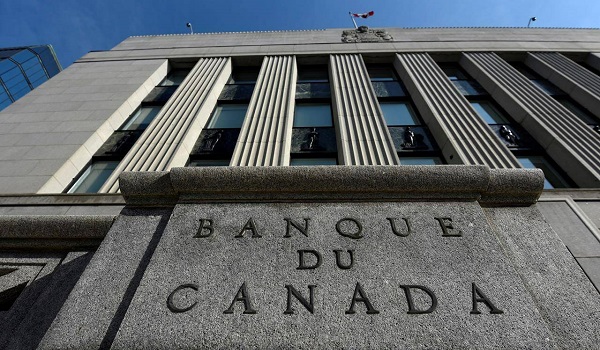Introducing AI into solving Toronto’s never-ending gridlock, will it be of help?
To state the obvious, Toronto’s traffic is bad. The city consistently ranks among the worst in the world for congestion, and one recent study estimated drivers spend nearly 200 hours stuck in traffic every year.
What’s less obvious is how to solve it.
Experts often argue that incentivizing people to leave their cars at home and take other modes of transport — like public transit, cycling and walking — is the best way to unclog city streets.
But this can’t happen overnight. It requires public and political buy-in, funding and infrastructure, which can take years to build. Meanwhile, as the world’s population grows and the climate crisis worsens, the need to move people around cities more efficiently — and sustainably — is only getting more important.
But there is one remedy for gridlock that works almost immediately: artificial intelligence. AI is making inroads in helping cities across the world manage their traffic problems — including one solution recently tested in B.C. that benefitted drivers and pedestrians alike.
AI has two main capabilities when it comes to traffic, said Bilal Farooq, TMU professor and Canada research chair in disruptive transportation technologies and services. One, it can predict how bad congestion is, and two, it can proactively manage that congestion by adjusting signal timing or rerouting people.
Most traffic signals around the world still operate on fixed timing plans programmed by engineers that lack the ability to respond to changing traffic patterns or communicate with other signals across the grid. AI — including a recent patent developed by Farooq and TMU’s Shadi Djavadian — aims to fix that.
Farooq and Djavadian’s algorithm collects information locally at intersections — on travel times in the area, on greenhouse gas emissions, and other relevant things — and uses that information to predict how bad traffic will be. The technology then communicates that prediction with other intersections, which can then react.
“As a result, the network throughput improves, and because of that, travel times decrease and we are using the network more efficiently,” Farooq said. In one simulation for downtown Toronto, the traffic management system reduced average travel times by as much as 40 per cent.
While AI can’t solve traffic overnight, it can create gradual improvements that have drastic effects across the entire system, Farooq said.
That was the case for one recent intervention at the University of British Columbia by Israeli startup NoTraffic, Rogers and AI Nvidia. The companies implemented an AI-powered traffic management system by NoTraffic at five busy intersections across UBC’s Vancouver campus, with the goal of making streets better for pedestrians while moving more cars through. Over the course of one year, the technology was estimated to have cut pedestrian wait times by 2,500 days and vehicle wait times by 4,700, while decreasing carbon dioxide emissions by 75 tons.
NoTraffic uses sensors to distinguish between different types of road users, taking into account their speed and location. The platform then uses that data to improve traffic flow across the city, responding in real time to changing road conditions.
“When we look at a traffic light, think about it as a network that needs to operate together simultaneously, to be dynamic, to serve different types of road users,” said NoTraffic CEO Tal Kreisler. “If we have an amazing traffic management system, but we cannot communicate and collaborate with other systems, it will not be the most efficient.”
That doesn’t always mean favouring cars, Kreisler said. Cities can program the NoTraffic system with their own priorities, whether they be speeding up public transit, making streets safer for pedestrians, easing gridlock or all of the above.
NoTraffic’s platform, which bills itself as the world’s first autonomous traffic management system, will be in 100 cities by the end of the year, Kreisler said. The UBC study was its first foray into Canada.
The results caught the eye of Roger Browne, Toronto’s director of traffic management.
“I am very excited about the work that the folks at UBC are doing,” Browne said, adding that NoTraffic’s system takes AI traffic solutions to a “whole new level.”
However, the notion of using technology to improve traffic is not new for the city. “The city of Toronto is actually a bit of a pioneer when it comes to artificial intelligence intersections,” Browne said.
In the mid-’90s, Toronto adopted a system called SCOOT, or Split Cycle Offset Optimization Technique, considered a first generation AI technology for traffic, Browne said. Six years ago, the city upgraded to a new system called SCATS, or the Sydney co-ordinated Adaptive Traffic System, which has sensors that collect data on vehicles at intersections and uses an algorithm to come up with optimal signal timing.
About 500 of Toronto’s 2,500 traffic signals are equipped with either SCOOT or SCATS technology, Browne said. He believes the city could still derive a lot of benefit from adding newer — and more — technology to the system.
What sets NoTraffic’s technology apart from SCATS is that it focuses on all road users — not just vehicles, Browne said. In addition, he said, while second-generation AI technology like SCATS allows cities to put certain parameters into the system which the algorithm then implements. NoTraffic’s system allows a city to set priorities, which the system enacts, adapting to changing conditions in a way that older technologies are not capable of.
Toronto has many challenges when it comes to managing traffic, from the city’s record numbers of cranes in the sky to the return of city life and special events to the construction of major public infrastructure projects like the Ontario Line that are disrupting downtown. Because of this, Browne said, the city is talking about technology as a traffic management solution more than ever.
And there’s nothing stopping us from getting it. Even amid Toronto’s unprecedented budget crunch, Browne said helping people move around the city more easily is a top priority.
“I think it’s one of those things where obviously there’s a significant cost, but quite frankly, it’s the cost of doing business,” he said.
This article was reported by The Star
















